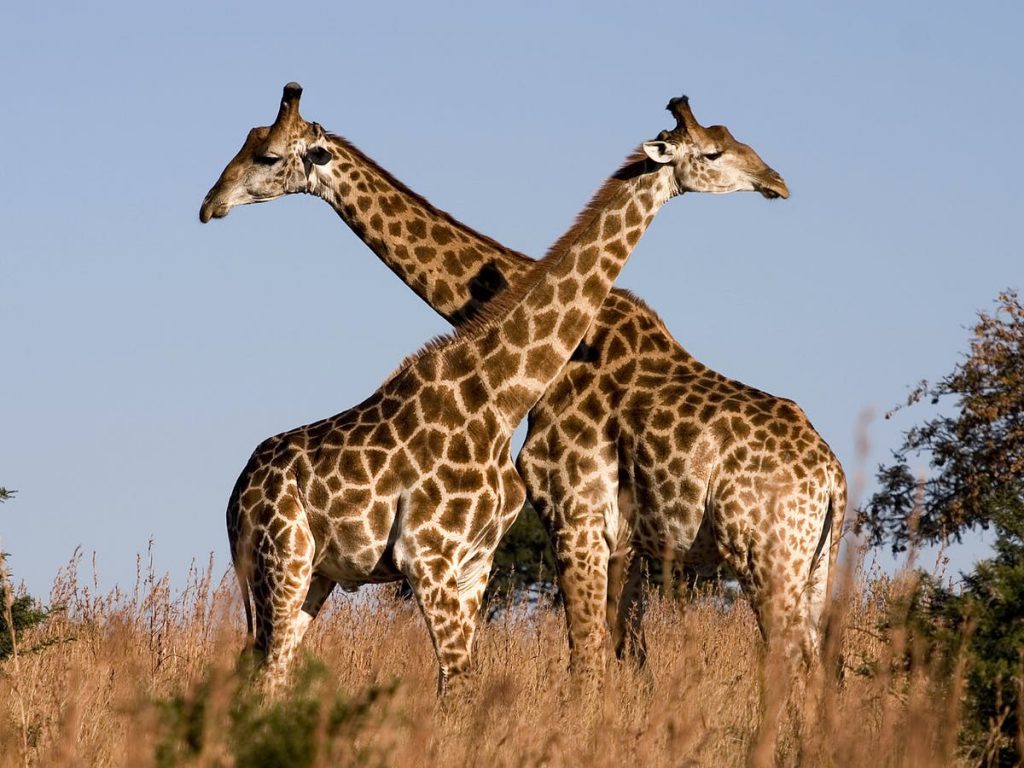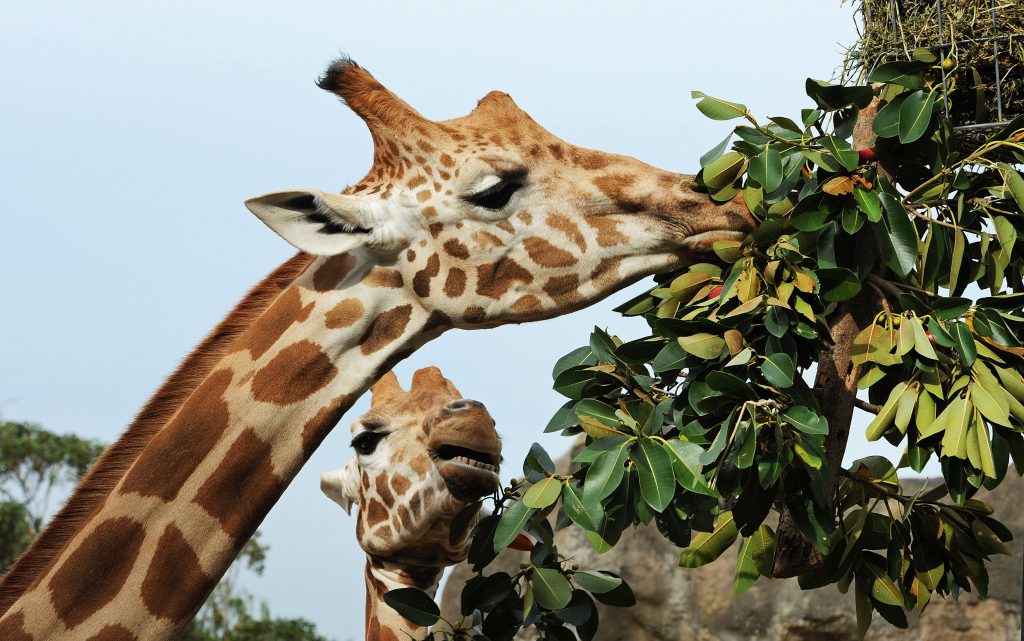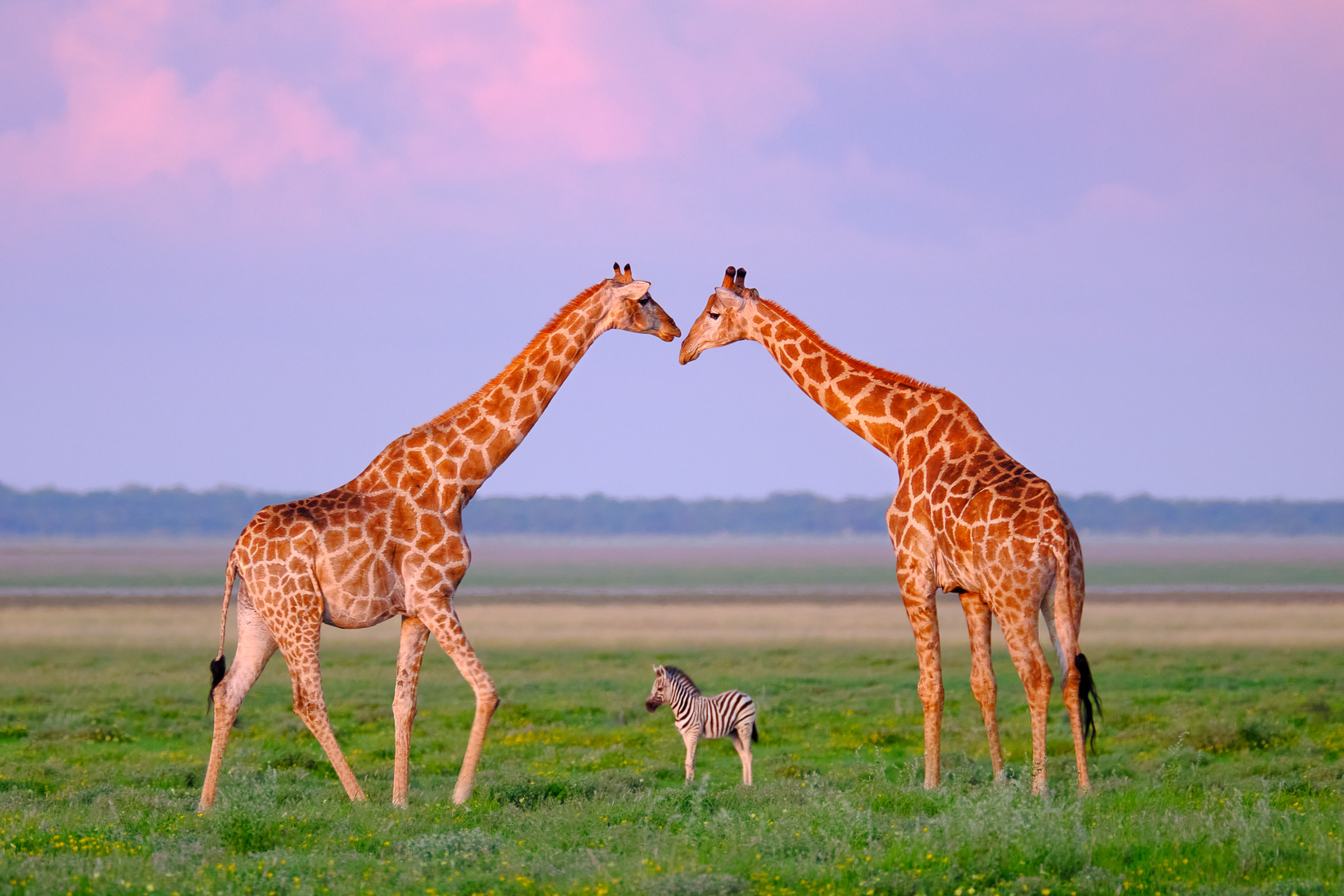- A giraffe can go without water longer than a camel.
- A giraffe can eat up to 35 kilograms of plants per day.

- Giraffes have a completely black tongue, the length of which can reach up to 45 cm.
- The length of one step of a giraffe is 6-8 m.
- The impact of an adult giraffe is so strong that it can decapitate a lion.

- The heart of a giraffe is huge. It weighs 11 kilograms, has a length of 60 centimeters and a wall 6 centimeters thick.
- The giraffe was named “camelopardalis” (“camel” – camel, “pardis” – leopard), because it resembles a camel (in its manner of movement) and a leopard (due to its spotted color).
- Like fingerprints, giraffe coloration is also unique.

- When a giraffe gives birth, its cub falls from a height of one and a half meters.
- The giraffe’s mouth is surrounded by a horny layer of skin that protects it from the sharp thorns of the acacia tree that it feeds on.
- The giraffe’s saliva, which is very thick, wraps around the spines, making it easier to swallow.

- Special valves in the jugular vein prevent blood from flowing back to the heart, which would starve the brain of oxygen. And also these valves protect the brain from excessive blood supply when the head is tilted down while drinking.
- The neck of a giraffe has only seven vertebrae, the same number as the neck of a human.
- Although giraffes sometimes sleep lying down, most of the time they are upright and sleep standing up, sometimes placing their head between two branches to keep from falling.

- It is a misconception that giraffes do not make any sounds. They may roar or bellow in dangerous situations.
- A newborn baby giraffe, which can stand on its feet in about an hour after birth, is 1.5 meters tall and weighs about 100 kg.
- A giraffe can run at a speed of approximately 55 km/h.
- A giraffe can clean its ears with its tongue.

- Their only real enemy (besides humans) is the lion.
- The only relative of the giraffe is the okapi (Okapia johnstonii).
